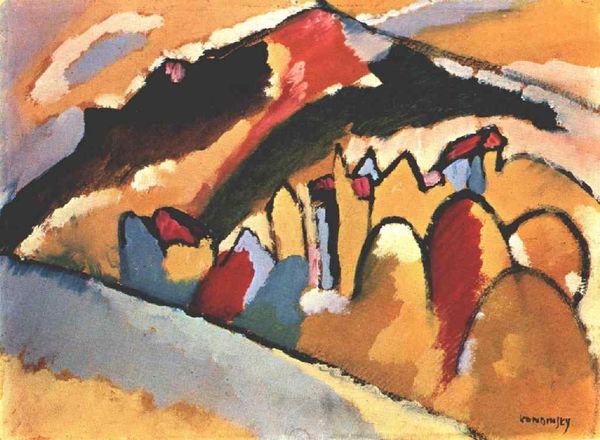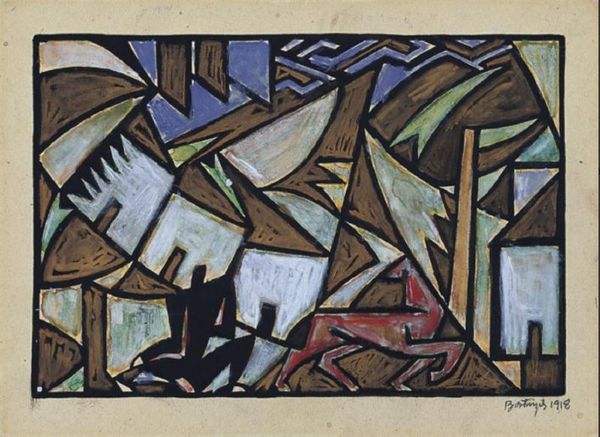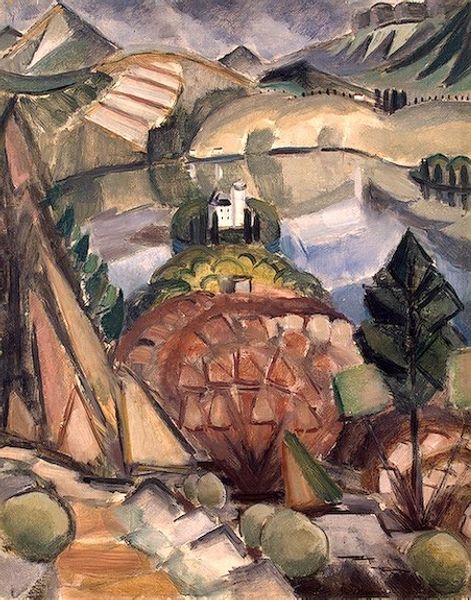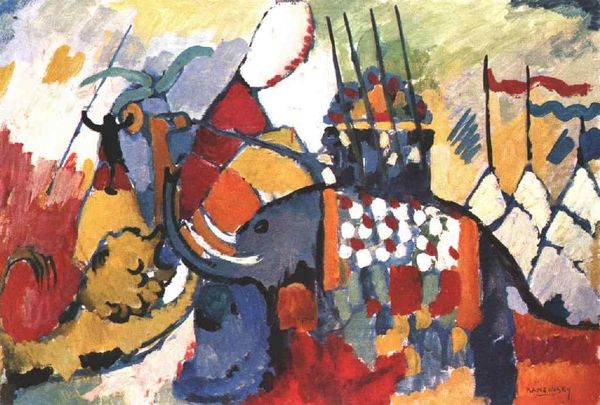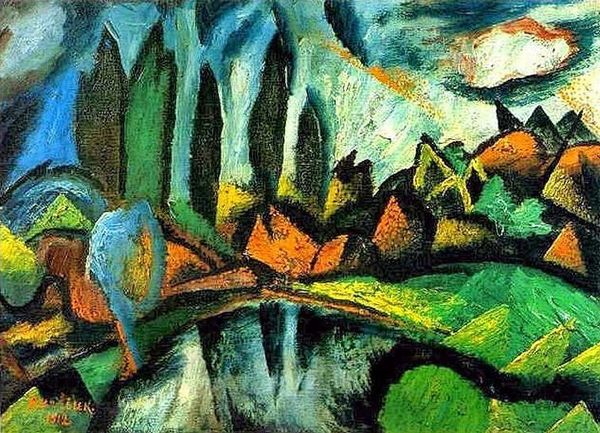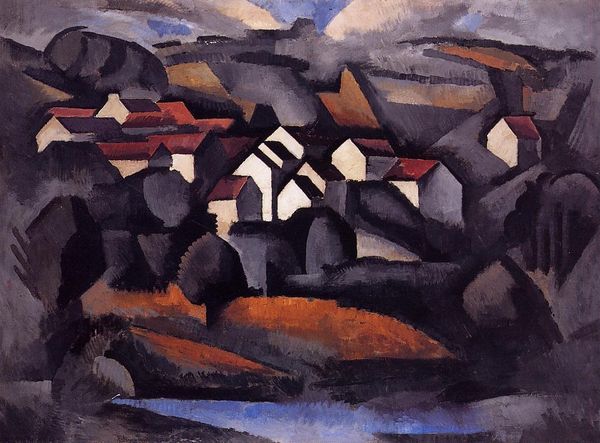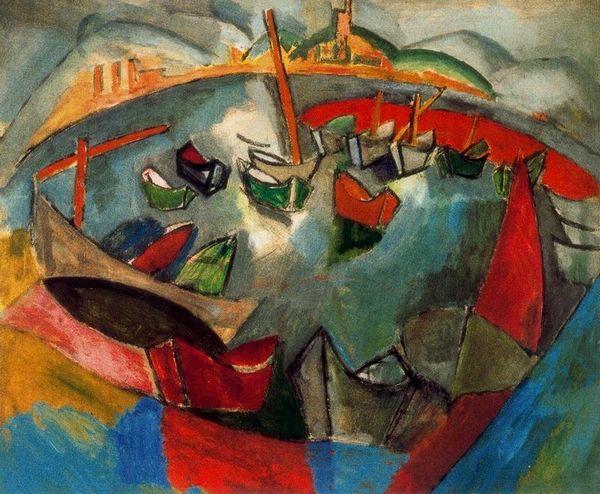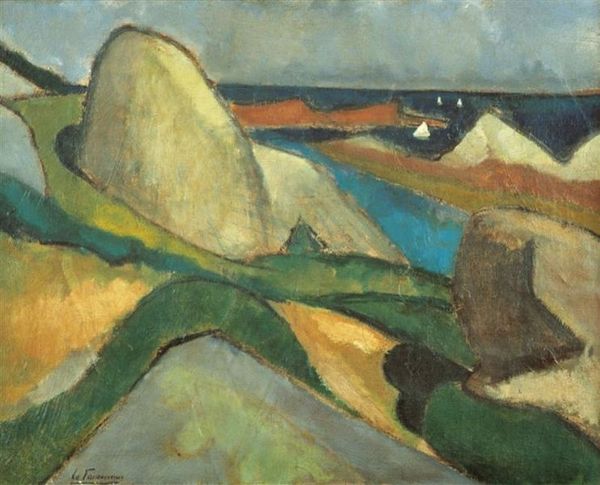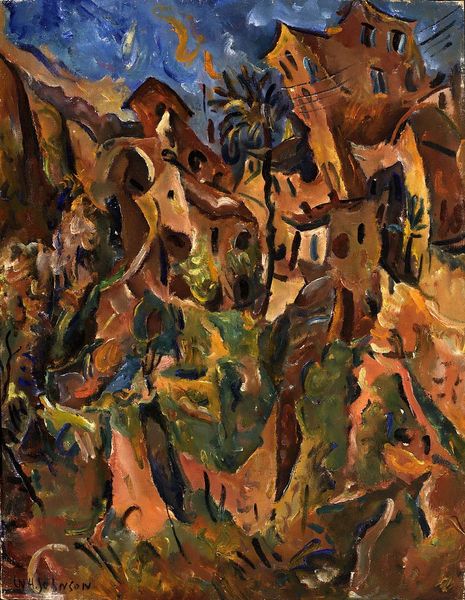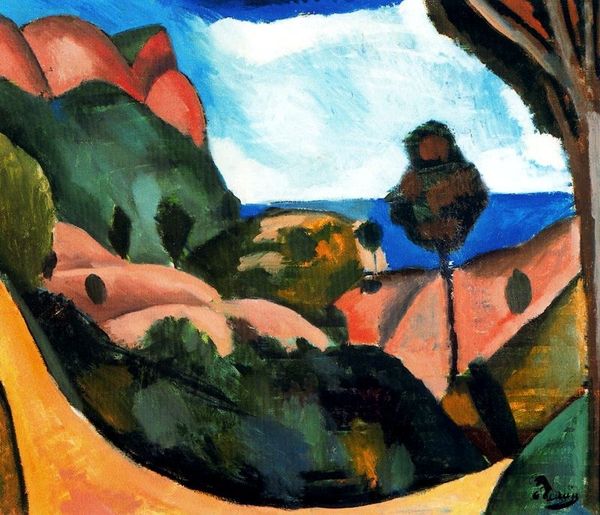
painting, oil-paint
#
portrait
#
fauvism
#
fauvism
#
painting
#
canvas painting
#
oil-paint
#
landscape
#
figuration
Copyright: Public domain
Curator: Welcome. Here we have a fascinating canvas painting called "Shepherd," possibly crafted by Amadeo de Souza-Cardoso, though its date is uncertain. The artist utilized oil paint to depict a landscape. Editor: The composition really grabs you, doesn’t it? There’s almost a sense of precariousness in the figure’s posture, and a strange isolation given the pastoral subject. I feel this distinct visual anxiety, maybe a commentary on rural life. Curator: Precisely! The pastoral theme itself is deeply symbolic. Shepherds traditionally represent care, guidance, and even spiritual leadership. What cultural weight do you think that brings to this representation? Editor: Considering the historical context of rapid industrialization happening when Souza-Cardoso was creating art, the painting takes on another layer. It almost reads like a critique, posing questions about the impact of modern life on traditional roles. Is this idealized shepherd actually burdened, as the leaning staff implies? Curator: It's remarkable how the artist has used recognizable Fauvist aesthetics here. We see figuration, but filtered through that lens. Even though there are familiar elements – the staff, the hat, and sheep, what symbolic distortions emerge because of Souza-Cardoso's bold choice of Fauvist aesthetic? Editor: The formal style certainly reinforces this idea. It calls attention to itself and creates distance. But think also about access and labor... a ‘traditional’ lifestyle only remains so by the exploitation of those in that mode of living. Curator: So the shepherd archetype, perhaps, is fraught now – far removed from earlier idealizations. The composition certainly captures the solitude. Editor: It absolutely complicates any sense of pastoral ease. In many ways, the artist might be highlighting the realities that are so easily romanticized away. Curator: The lasting impression it leaves me with is the powerful blend of tradition and modernity – how the artwork uses a familiar image to provoke questions. Editor: Exactly. For me, "Shepherd" pushes us to reconsider idealized versions of the past and reflect on the inequalities perpetuated by a blind adherence to tradition.
Comments
No comments
Be the first to comment and join the conversation on the ultimate creative platform.
